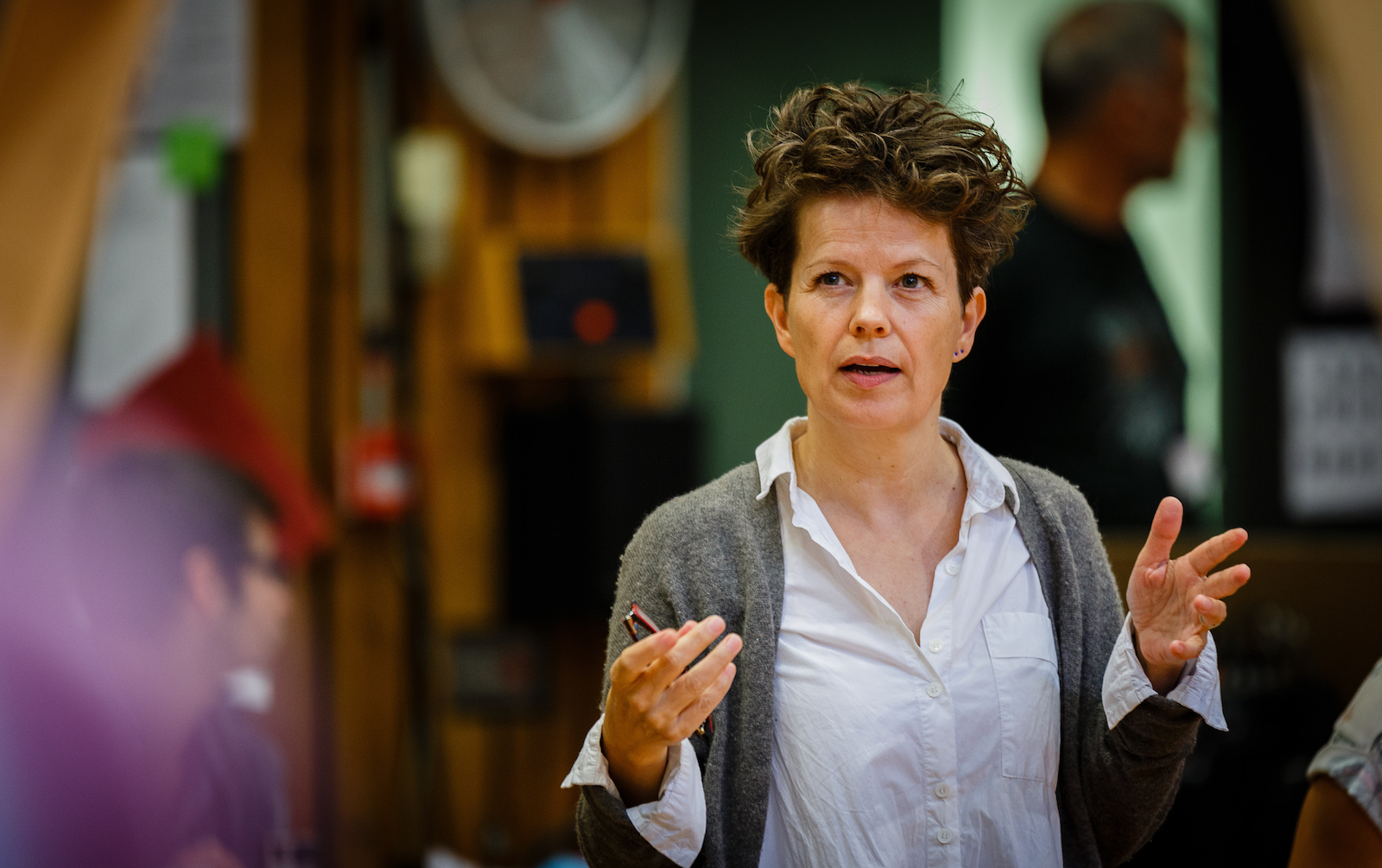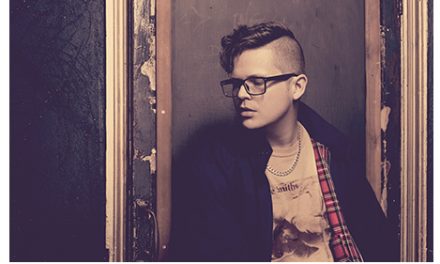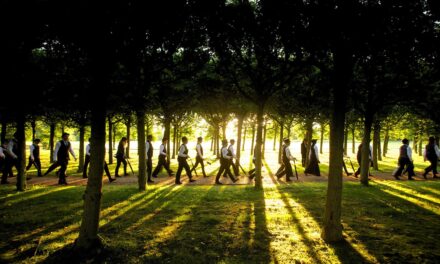Norwich Eye caught up with Director Sally Cookson for a chat about her adaptation of Jane Eyre:
Norwich Eye – What inspired you to adapt and direct Jane Eyre? Is it a book you particularly admired
I chose this particular title because it’s a story that I love and have enjoyed a close relationship with ever since I was intrigued as a child by Orson Well’s black and white melodrama with fabulous music by Bernard Hermann. I didn’t actually read the novel until I was in my early twenties – and I remember thinking while I read it: ‘this is a clarion cry for equal opportunities for women not a story about a passive female who will do anything for her hunky boss’. I was struck by how modern Jane seemed – her spirit and strong will, her peculiar and brilliant mind striving for personal freedom to be who she is, lashing out against any constraint that prevents her from being herself. She was exactly the sort of person I wanted to be.
Norwich Eye – How did the process of devising and directing the play work?
Adapting a novel for the stage is a challenging prospect – especially when that novel is cited as many people’s favourite of all time. It is always daunting when you’re working on a story which everyone knows so well, because you want to surprise and maybe challenge people’s expectations, without losing any of the things which make them like the story in the first place. Our job has been to turn it from a book into a piece of theatre. Essentially that means creating something new – the experience of reading a book is very different to watching a play. Rather than approach the novel as a piece of costume drama, I was keen to explore the themes and get to the heart of the story and characters in a theatrical way. I didn’t want authentic set and period costume to suffocate it, killing the essence and magic of the story.
The devising process involved us as a company responding together to the book. Mike Akers (dramaturg) and I had put a rough structure in place, had made some decisions about which characters were in and which were out, and were in agreement about our version emphasising the comings-of-age aspects of the novel as opposed to focusing just on the Jane/Rochester relationship. But on that first day of rehearsal, there was no script, no read-through, just us as a company taking a deep breath together, making a leap into the unknown, trusting that eight weeks later, we’d have a show to perform.
A lot of the scenes emerged through improvising, playing and trying out lots of different versions. I like theatre that doesn’t just rely on text, so investigating which sections of the book lent themselves to visual storytelling was exciting.
A key aspect of my role as director is to act as a facilitator and editor of the creativity in the room – I love shaping the material that emerges, pursuing and developing the kernels of ideas. Towards the end of the rehearsal period – we lock down the ideas (until previews start, when we make big changes), so that we can rehearse the material we have got.
Norwich Eye – What is the history of your production?
In 2013 the Artistic director of the Bristol Old vic, Tom Morris, gave the green light to my idea of devising a two-part version of Jane Eyre, performed over two nights. After its run in Bristol the production was invited to the National Theatre. It was agreed that we’d distil the two shows into a single event – still retaining its epic quality but honing and tightening to make the experience more intense. The chance to develop and shape work isn’t something that theatre-makers often get to do, so this was a very exciting opportunity for us. The run at the National was really successful and the decision was made by the NT and BOV to tour the production in 2017.
Norwich Eye – What do you think are the main themes of the story?
Re-reading the book now, I’m struck by the weight the novel places on individual human rights. Jane understands from a very early age that in order to thrive she needs to be nourished – not just physically but emotionally, spiritually and intellectually. These basic human needs are central to our well being and Jane has a fundamental understanding of this. I like to think of it as a Life story rather than a Love story (the original title was Jane Eyre – an Autobiography) which sees Jane develop from a powerless child into an independent, free-thinking adult. But, like any fine piece of writing, Jane Eyre is multi faceted and it seems that whoever you are and whatever your age, each reader will gain something slightly different from it.
Norwich Eye – How do you think that the story resonates in today’s society and today’s audiences?
Firstly, it is a superb story – a real page turner, with a protagonist who you root for from the start. Secondly, despite the fact that it was written over one hundred and sixty years ago it deals with all the things we still find ourselves struggling with – ‘where do I fit in, who am I’? The intensity of the novel’s search for identity is something we have all experienced. Surrounding the heroine are characters grappling with their own individual identity crises. I don’t think there is one character who is not struggling in some way to come to terms with their circumstances and wrestling with the very idea of what it is to be human. whether it’s Rochester or Helen Burns, Mrs Reed or Blanche Ingram, St John Rivers or Bertha Mason – all these characters are flailing around in an attempt to discover/come to terms with who they are. In the middle is Jane taking responsibility for her life and always taking action to change her circumstances when her integrity is in danger of being threatened.
Norwich Eye – Can you tell us something about the staging of the play, the music, the design and the style.
I would describe it as an ensemble piece – performed by seven actors and three musicians. Apart from the actor who plays Jane, the actors play more than one part and are all onstage most of the time. The set which is a wooden structure made up of platforms, ramps and ladders is far from a literal interpretation of the victorian period – it has a minimalist simplicity but provides the actors with a playground on which to perform and illustrate the physical and emotional struggle Jane encounters as she develops from a child into an independent woman.
The band are placed in the centre of the set – I wanted the music to be central as it is intrinsic to the production. Benji Bower the Composer uses a variety of genres including folk, Jazz, sacred, orchestral and pop to create the world Jane inhabits.
Norwich Eye – How has your career developed from acting to writing and directing?
I trained at Lamda and worked as an actress for ten years before finding myself in Bristol where together with an actor friend set up a summer theatre school for young people. This was a life changing event for me – I discovered that I loved directing, which lead to me becoming part of the Education Department at the Bristol Old Vic. While I was there Travelling Light theatre company invited me to work for them as a director which lead to a ten year collaboration. Now I work for whoever offers me a job – but am very happy to still be part of Bristol Old Vic as an associate artist. I wouldn’t ever consider myself a writer – but due to the nature of the devising process I have an understanding of narrative structure. I always work very closely with a dramaturg on every production to take responsibility for the overall shape of the piece.
Norwich Eye – Will the touring production develop from the show people may have seen in Bristol and at the National Theatre?
The touring production of Jane Eyre will have a new cast and as with other re-mounts I’ve done will be tweaked and honed for the better! I think it’s essential to keep improving a piece of work. But essentially it will be the same.
Norwich Eye – Have you visited the Bronte Parsonage in Howarth?
Yes – more than once. In 1991 I stayed in Haworth for a couple of weeks when I was working at the Alhambra theatre in Bradford, it was early Spring and the village was almost deserted. I visited it again before I started rehearsals for Jane Eyre with my family – we could hardly move for the crowds and I wondered what Charlotte Bronte would have made of it all?
I’m looking forward to a narrowboat holiday in July on the Rochdale canal which passes through much of the countryside that provided such inspiration for the Brontes.
Norwich Eye – Do you have any connections with any of the cities, towns and areas the show will be touring to?
My Mother grew up in Brighton and we stayed in Hove every Summer with my Grandparents during my childhood. I have very happy memories of trips to the Brighton Theatre Royal and sitting in the gods watching big musicals – Joseph and his technicolour dreamcoat had a big impact on me, I learnt all the lyrics and performed all the songs with my cousins in our own version. I still have family there – so it will be lovely to visit and take a trip down memory lane!
Norwich Eye – How do you feel about the fact that your production of Peter Pan ran at the National Theatre earlier this year, followed by a tour of Jane Eyre. Is it something you expected when you first started working on the adaptations?
I’m thrilled to be working on Peter Pan at the National – it feels great to have a show that was originally made at Bristol Old Vic being given the opportunity to be seen by a wider audience. Rufus Norris understands the importance of giving regional theatre a platform in London – after all it is the ‘National’ theatre, and should reflect the inspiring work that is being made throughout the country. The Jane Eyre tour is a really exciting venture too – and I certainly never expected it to have the life that its had. Bristol Old Vic took an enormous risk when they originally agreed to produce it, and all I thought about when we first started working on it was ‘hold your nerve – keep going’.
Jane Eyre – Monday July 17 to Saturday July 22, 2017. Eves 7.30pm, Mats 2.30pm Wed & Sat. Tickets £8-£27.50. Discounts for Friends & Corporate Club, Over 60s, Under 18s, Schools & Groups. Audio Described Performance Wed July 19, 2.30pm. Captioned Performance Fri July 21, 7.30pm. BOX OFFICE 01603 630000. For more info or to BOOK ONLINE www.theatreroyalnorwich.co.uk





Recent Comments